Ever since Steven Soderbergh tasted his first sip of singani, the national spirit of Bolivia, he has been on a mission to deliver its story—and singani itself—to America. Having launched his own label, Singani 63, he's the only U.S. importer of the spirit. Just this year, he succeeded in getting singani recognized as its own spirits category by the U.S. government after a nearly nine-year effort.
Singani is an un-aged, grape-based spirit made exclusively from Muscat of Alexandria grapes grown at high altitudes in the Andes mountains of Bolivia. It’s a clean and smooth sipper that Soderbergh first tasted while shooting his two Che films and continues to enjoy on the rocks. Some mixologists are now calling it the bar world’s newest base spirit.
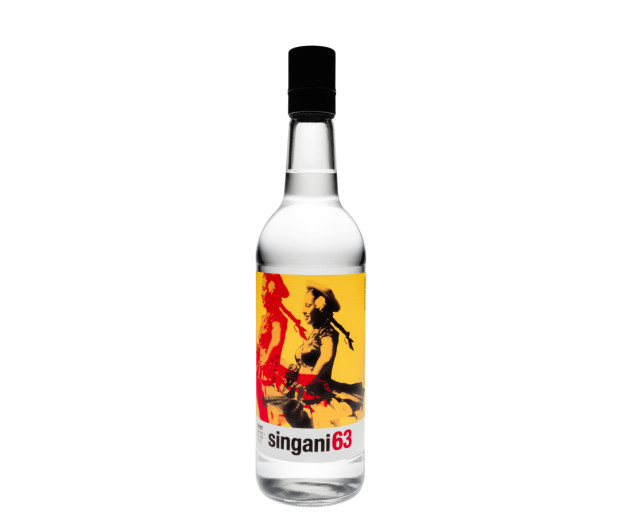
We spoke to the Oscar-winning director of films as diverse as Sex, Lies, and Videotape, Traffic, Erin Brockovich, Magic Mike, and the Ocean’s trilogy, as well as television shows including The Knick and Full Circle, about the similarities and differences between making movies and moving bottles. For a director with a reputation for being preternaturally prolific, he somehow still finds the time to build his singani brand with as much attention to detail as his movies—shot by shot.
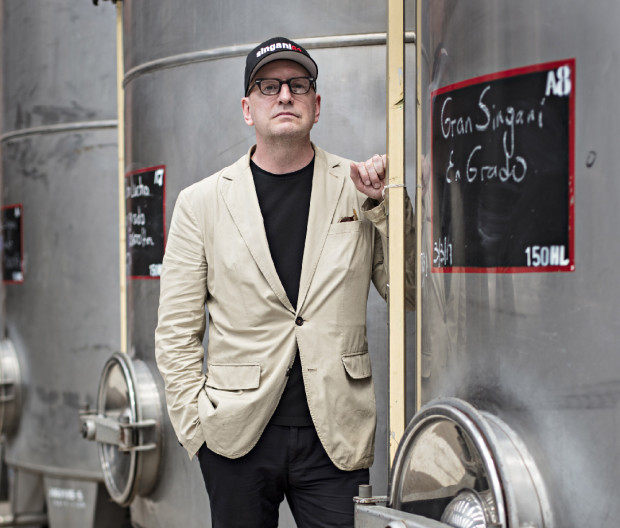
Men’s Journal: How did you first get introduced to singani?
Steven Soderbergh: This goes all the way back to 2007. I was in Madrid, and we were beginning production on the two Che films. My Bolivian casting director brought me a bottle of singani as a startup gift, made by a Bolivian company called Casa Real. I considered myself a professional drinker, but I didn't know what it was. At that point, it had never been legally exported outside of Bolivia. He was only able to find a bottle on the black market through some local Bolivian connections.
Your initial reaction?
I said, "What is this stuff?" And he goes, "Well, it's the national spirit of Bolivia. Everybody drinks it there—and I have a connection to the family that owns this distillery." So, we cracked it open and, as a vodka drinker, I had an immediate reaction that was three-tiered: The first one began with him pouring it in the glass and just bringing the glass up to my nose, and remarking, "Wow, this has got a really great bouquet." Vodka doesn't have a smell, so this was a pleasant surprise that it had a really distinctive and pleasant nose.
Then I took a sip and immediately was very surprised at how active it was on the palate. There were all these different notes that seemed to be emerging the longer you had it in your mouth. The more you kind of moved it around, you were getting all these different sensations.
Act three was the swallow. I was used to what I would call the "second swallow." If you drink vodka straight, I’ve always viewed it as inevitable that the burn was just the price you pay to get into the end zone. This stuff just completely vanished.
Sounds like you were ready for another bottle when the production moved to Bolivia.
By the end of six months of shooting in Bolivia, the camera crew and editorial department had all gotten hooked on it. That's when someone proposed that I become the first exporter of singani and import it into the United States. So, not knowing anything—I mean, literally anything—I thought, "Okay, how hard can that be?" That's how naive I was.
Related: 10 Unique Spirits Every Cocktail Lover Needs
What were your first steps?
First, I had to make a deal with Casa Real to become the sole exporter. We decided to create a new version of singani to justify a new label—and so, Singani 63 is the only version made with only estate-grown grapes. What I found out during this process was that Casa Real has very unique methods apart from the criteria that's required—the single varietal, the altitude, and the 20,000-acre area where it's grown and distilled. Casa Real is the only distiller that uses copper pot Cognac stills and distills their singani twice instead of once.
So, first I made a deal with them. Then I had to apply to the U.S. government to become the importer. You’ve got to send them a sample. Then you have to wait—while getting these random phone calls where they'll ask you these odd questions. What I realized was this is their way of vetting my bona fides to make sure it's not some kind of elaborate scheme.
Eventually, when you get your license to be the importer, they've also given it a category designation. When it came back as brandy—even though I was aware that the TTB [Alcohol Tobacco Tax and Trade Bureau] treats anything distilled from fruit as brandy—I still found that designation confusing. I immediately asked the people I was working with, "What do we do about this?" They said, "Well, that's a very long process to petition to get your own category, and we've got to move forward."
Okay, so now you have a label and you’re the official exporter and importer. How do you actually get it here?
The thing that I'd conveniently or inconveniently forgotten, even though it's a central plot point of the second Che film, is that Bolivia is landlocked—so, logistically, exporting it was not an easy thing to do with the available resources. But we sorted that out, and eventually I had 250 12-packs of Singani 63 sitting in a warehouse in New Jersey.
Then we started the unavoidably Willy Loman-esque process of taking a bottle around early on—literally going account to account. We went to the best mixologists in New York. The first people we went to were Sasha Petrosky, Alex Day, Julie Reiner, Ivy Mix, Jimmy Han—we just went right to the hardcore people and literally just said, "What do we have here? Like, what is this?"
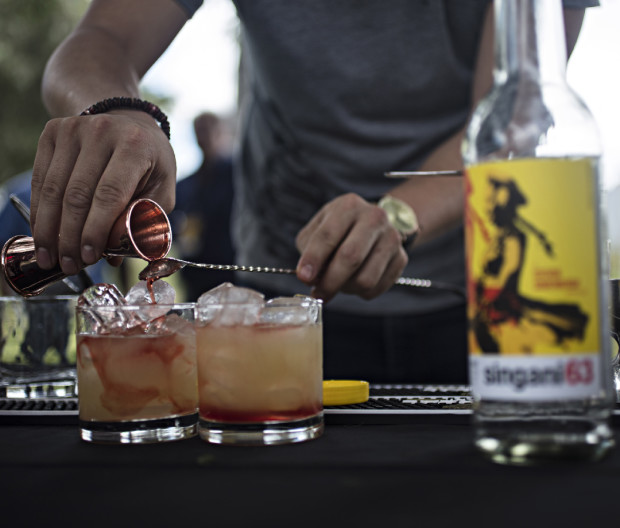
What did these A-list mixologists think of it?
Fortunately, they all said, "Okay, you've got something." Like, you're the guy that bought an interesting looking painting at the garage sale and had it appraised, and somebody told you, "That's a Rothko." They all commented on its extreme versatility. Alex Day said, "This is the eighth base spirit. That doesn't come along very often."
How would you compare launching a new spirit brand to making a movie?
It's been fun to parse the similarities between my day job and my night job, and the dissimilarities between the two. The entertainment business is a people business. It's very personal. But it's even more so in the spirits industry. I think the karmic aspects of it are much more apparent than they are in the entertainment industry. You're hyper-aware that the person you meet today, who's behind the bar at an account that you're trying to get into, could be running the cocktail program for a chain of high-end hotels next year.
They’re both story driven businesses, and they're both very socially-oriented. In the entertainment industry, your ability to work well with people is critical to getting them to say yes to you over and over again. In the spirits industry it's similar—although, I have to say, I find people in the spirits industry willing to do anything they can to help you from the jump, as soon as you've met them. There doesn't seem to be a belief that this is a zero-sum game. They've been incredibly generous with their time, experience, and contacts.
Everyone just looks at me as a person trying to build a brand, which they know is a hard thing to do. When you're trying to bring a spirit to market, the patchwork of rules and regulations from state to state is insane. It makes no sense, and there's no universe in which it's ever going to get any better. Ultimately, the big brands and the states themselves benefit from everything staying exactly as it is, which it makes it really hard for small brands to break through.
Related: 13 Bartender-Approved Whiskey Cocktails You Need to Try
What's the best bit of advice you've gotten for launching Singani 63?
I pumped Dan Ackroyd for information about his experiences with Crystal Head vodka. He said to me, "You gotta show up." He goes, "You’ve gotta show up for everything, and if you're not willing to do that, then don't do it. You don't have a chance. You have to go everywhere and talk to everyone." I really took that to heart.
How has your filmmaking fame factored into this launch?
In the early days, there were really highfalutin' accounts that, when they found out I was involved, wouldn't take it. Like, we already had them sold, and then the person is like, "This is really interesting, so how'd this come to market?" Once they heard I started it, they'd back away. "Yeah, we don't do celebrity brands here." So, our sales rep never leads with me. They just lead with the spirit. Plus, I've been very, very careful about not soliciting the help of anybody who I know could [bring notoriety] to the brand because they're friends of mine. I just can't, I won't, cross that line. It'll just ... it'll have to be somebody else.
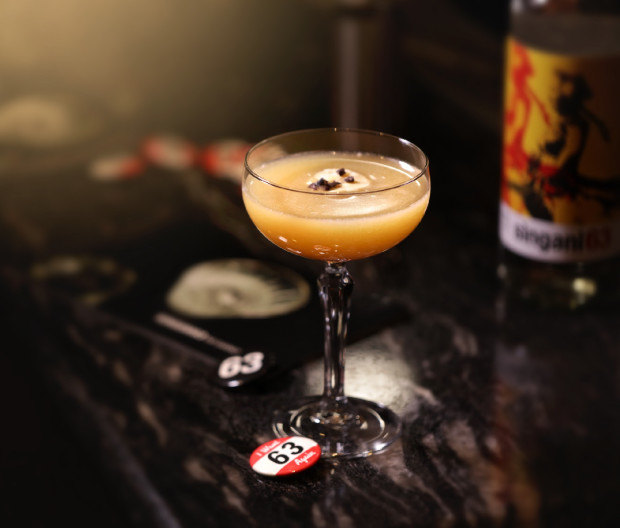
What about a Singani 63 cameo in a movie?
It could be showing up in a movie. I'm trying to build a niche for us—of being a brand that will be in any movie or TV show no matter how adult the content. One of the problems for a filmmaker when you want to have a real-world brand in your movie or your show is that they're like, "Well, we want to read the script." Like if it's not used in a way we think is, you know, cool with us, you can't use it. I want us to be the brand that’s like, "We don’t care." It's just a movie. It's just a TV show. You want a real brand in your movie and have some guys, like, killing people with the bottles? Sign us up. Just tell us how many bottles you need.
What's it like creating something for people to imbibe versus something for them to watch?
It’s been my experience that with enough marketing resources and the right kind of approach, you can pretty much convince people that the TV show or movie that you're trying to talk them into seeing is good and is liked by a lot of other people—even if it's not. Movie and TV marketing can really do a Jedi mind trick on you. But when you're talking about something that somebody's going to put in their mouth, that doesn't apply. You can spend a lot of money on marketing and create awareness, but you can’t convince somebody that they’re wrong if they put something in their mouth that they don't like.
What's your favorite way to drink singani?
One big rock. I call it the Subwoofer.
Related: Buckle Up: The Best Men's Belts of 2023
Is there a typical response from people sipping it for the first time?
The taste. They’re not used to a spirit at this ABV which is this approachable and complex in terms of its palate. And then the sort of invisible swallow. That never gets old watching them go through the same three-act process that I went through when I first had it—which is like, "Wow, this smells amazing, tastes amazing, and it just disappears." And as I explain to people, just be very conscious of your intake because it's fast-acting and deceptive. You start drinking this on the rocks, and before you know it, it feels like you're just drinking water.
There may be a couple of reasons for its soft profile. It's produced at 6,000 feet, which changes the boiling point of distillation. With the combination of the lower boiling point, the copper pot Cognac stills, and the second distillation, it's just really pulling out any of the harsh notes that might ordinarily survive that process. It really goes after the heart, and it shows.
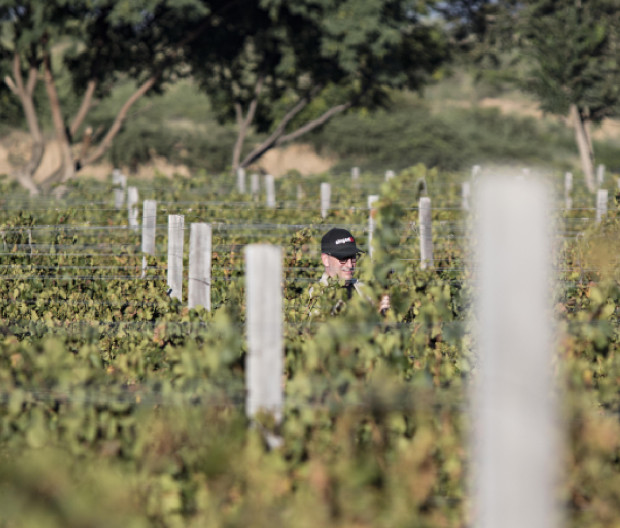
It took nearly a decade for the U.S. government to designate singani as its own spirit category this year. Why so long, what kept you hopeful, and how'd it finally happen?
In the first couple of years, they just kept saying no. Their first reason was, "We don't think this is a business." Our response was, yeah, that's not really your lane. But it kind of stalled there until the new administration arrived in 2016. By early 2019, I got a half-hour meeting with the Deputy Secretary of the Treasury, Justin Muzinich ... I take the train down to D.C. with my lobbyist friend. We go into the room, spend the first 10 minutes laying out our story. He asks a half-dozen very succinct, very smart questions about our story and about the brand itself and the way it's made.
Then he says, "Well, I don't see any reason why you shouldn't get this recognition. I'm sorry, it's taken so long. I'm going to do everything I can to push this through."
That's when stuff started to move. It was still a long process because four agencies need to sign off on it. You’re dealing with multiple layers of bureaucracy where "no" is the default. I just felt like, "This is legit, and if they're gonna give it to other people using the criteria they've used, then they have to give it to us." I just refused to stop.
Eventually, we reached a tipping point and it happened. And if the only tangible thing I end up accomplishing is getting that category, I'm okay with that—because it's not easy to do, and everyone in the industry knows that. It's like, if that guy put in the hours to do that, he is very serious.
How was this category designation received in Bolivia?
In general, Bolivians are very reserved and typically don't toot their own horn. But the day after the category was official here, our partners at Casa Real showed me the headlines of all the Bolivian newspapers. They're like, "This is a big deal for us. We’re so proud of this product, and for the United States to recognize it and designate it as its own category type."
You're the guy who introduced singani to America. How does that sit with you?
The randomness of it all is pretty crazy, starting with grape itself—which starts in Egypt, goes to Spain, and then these missionaries bring it down to southern Bolivia, where it's grown in a terrible place to grow anything. In order to even figure out how to industrialize the production of it, Casa Real consulted with agronomists in Africa and the Middle East to learn what to do with the topography—because if you don't do some sort of soil manipulation, it's not going to grow at all. So that first part alone is pretty random. How does this grape go on this journey and find its ultimate expression in this tiny little area in the Andes?
Related: Cape Cod, Nantucket, and Martha's Vineyard Travel Guide
Then, the second thing is that the casting director later said, "You know, I almost just brought you a T-shirt, but decided, ‘No, I want to give him something that has more meaning.'" So he ends up going into the Bolivian quarter in Madrid and looking for someone to sell him a bottle of singani on the down low. In other other words, this could've very easily not happened at all. When I think of how close I came to just not encountering singani in the first place, it's pretty crazy.
Your singani story has as many twists as a movie.
One of the reasons that I don't get tired of telling the story, as opposed to going on a junket to talk about a movie or a TV show, is that it's not my story. I don't get tired of telling it because I didn't make it. I'm just the guy with a bottle in his backpack—and that makes it fun for me, and pleasurable to shine a light on a country that not a lot of people think about or know about. I'm not appropriating anything. I just made a deal with the people who make it.
But in terms of provenance, production, and cultural integrity… yeah, I got lucky. I just showed up to move the bottle they made from one part of the world to another part of the world. The real-world benefits to Singani 63 becoming a bigger brand are absolutely quantifiable and immediate in terms of people going to work and the median income level of anyone connected to singani rising. It just calls attention to it in a way that really benefits the people who live there.
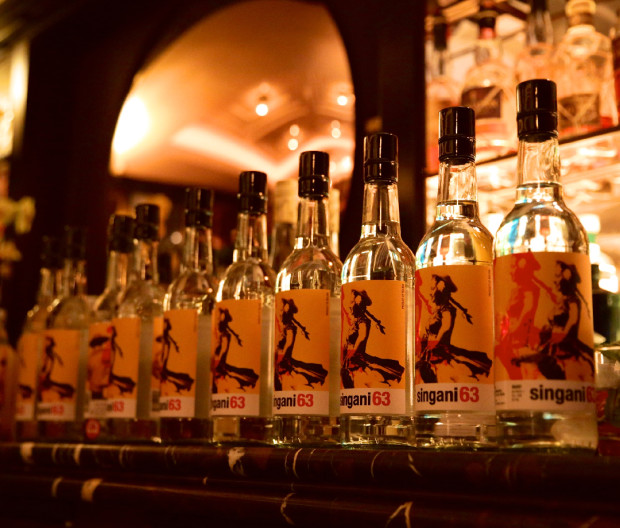
Has this Singani 63 journey changed the way you look at bottles on back bars?
I've gone from somebody who used to love going to bars and restaurants to somebody who, when they enter a bar restaurant, is now in work mode—analyzing what they've got on the back bar, what cocktails are on the cocktail menu with what spirits, and why. That thing that used to be just pure pleasure is now something else.
What's the next hopeful phase for Singani 63?
Now you’re looking for a kind of happy accident, a sort of cultural black swan tipping point that you can't really manufacture—something that suddenly gets people asking the question, which is the tagline of our campaign, "What the fuck is in Singani 63?" That's the unspoken question everywhere you go. My attitude has always been that if you can make people laugh, they're gonna remember you. And when I see spirit brands trying to get all serious and moody, I’m like, "Why are you making this seem like when you go out drinking, you're in some Emmy-nominated drama?" You go out to have fun, to connect with people, and to have a good time.
Would you want to join forces with a bigger brand down the road?
I don't want to be bought out. I just want a partner who can provide some accelerant to the process that we're in now. We’re a couple years away from getting to the level where a potential partner or a larger company starts to kind of kick the tires on your brand. If I can get in that room, I can explain to them how to blow this thing out.
In the meantime, it's like you're campaigning for an election that's never actually going to take place. You're just in constant campaign mode, going door to door. Starting a brand like this is pure grassroots. There's no shortcut. You just have to grind it out. But if your intentions are pure, and the product itself is authentic, and you just don't quit, you can get there.
from Men's Journal https://ift.tt/NX4vF7g
No comments:
Post a Comment